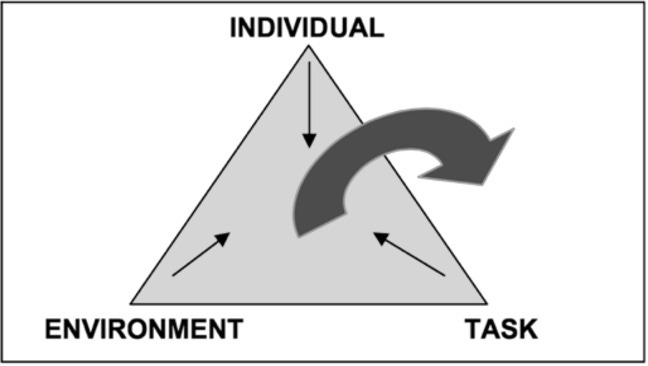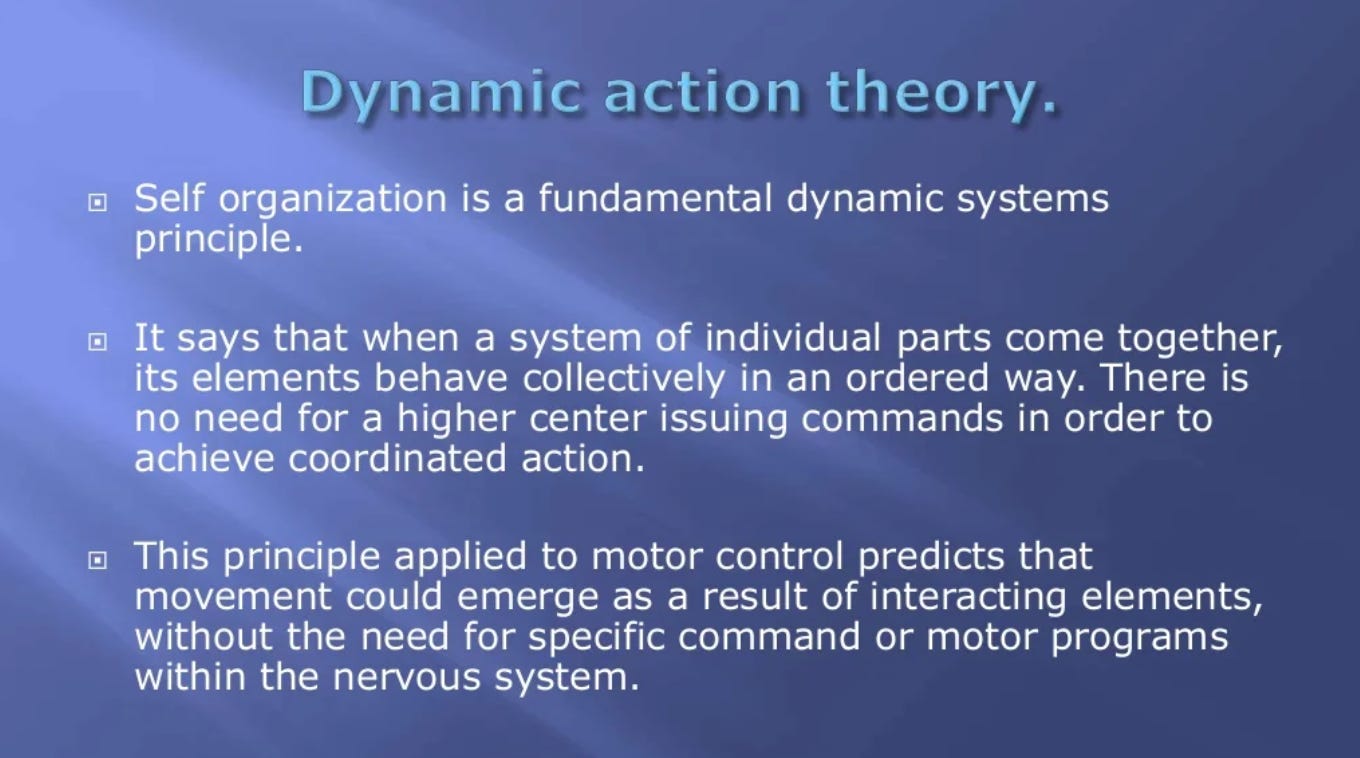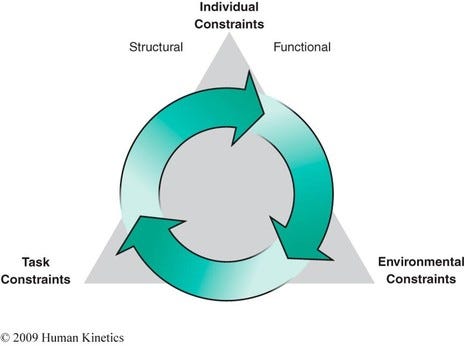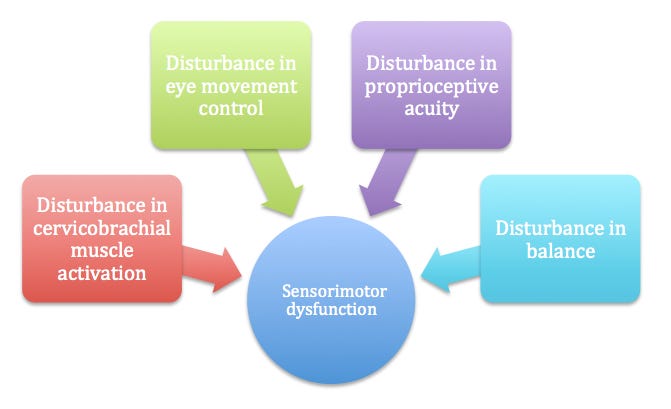
Dynamic systems theory (DST) helps medical and exercise professionals understand and explain the nature and causes of movement skill acquisition (Magill, 2011). The sensorimotor system could be viewed as the conduit through which individuals gather, process, and disseminate information, and movement, within the environment. In essence, there exists a symbiotic relationship between DST and the sensorimotor system; one relies on the existence of the other to perform its inherent functions. Such a dynamic allows individuals to successfully interact, and survive, within the environment around them.

The sensorimotor system contains two fundamental pathways, which relay information: the afferent (i.e., reception of information) and efferent (i.e., propagation of information, in the form of movement) systems.Both pathways use the peripheral and central nervous systems to send and receive information (Page, Frank, & Lardner, 2010). In effect, such information about the body and its relationship to the environment provides input on position sense and movement; the information is derived from mechanoreceptors and muscle receptors in the joints and muscles, respectively, as well as position on movement from the skin exteroreceptors. The collective acquisition of information from the aforementioned peripheral receptors is known as proprioception (Page et al., 2010).

DST postulates that there are factors which “shape and funnel” movement patterns, thereby enhancing organizational flow. Task (i.e., movement goal), organismic (i.e., the person), and environmental (i.e., all things external to the person) constraints provide incentives to the human movement system to acquire new strategies and movement patterns (Magill, 2011). The aforementioned constraints can help facilitate the emergence of new movements over time. However, the acquisition of new and novel motions requires synchronized recruitment of muscles and joints. The process of acquiring new motions into stable and consistent patterns is known as self-organization, considered the hallmark of a new movement (Clark, 1995).

If the sensorimotor system is considered the conduit through which information is received and dispersed, it can also be the zone, which limits DST and the full expression of meaningful and functional movement. DST requires all constraints to develop new movement strategies (Magill, 2011). If there is any block between the constraints, it may be difficult for the human movement system to “mold” a movement into its most efficient version. The constraints can also be viewed from the sensorimotor perspective; if the afferent inputs from the proprioceptive system were inhibited in some way, the individual would not receive any or all of the information from the constraints to make a decision on an effective efferent response (i.e., output). Thus, it is possible, and supported by evidence, that poor proprioception inhibits motor control (Page et al., 2010).

Sensorimotor dysfunction can have both local and global effects within the human movement system (Page et al., 2010). Global sensorimotor dysfunction can be viewed under the functional paradigm espoused by Vladmir Janda; distal problems (i.e., anterior knee pain) can be attributed to, or associated with, proximal dysfunction (i.e., weak and poorly stabilized hips) (Page et al., 2010). In other words, the motor system compensates for a loss of local stabilization by altering movement patterns. Additionally, weak muscles have also been associated with compromised proprioception (i.e., sensory input). Thus, since the sensorimotor system is an aggregate of afferent and efferent pathways, if proprioception (i.e., afferent) is compromised, efferent (i.e., output) responses will not only affect local musculature (i.e., the hip) but also more distal regions indirectly (i.e., anterior knee) since the body behaves as a kinetic chain, driven by the principles of tensegrity (Page et al., 2010).
References
Clark, J. E. (1995). On becoming skillful: Patterns and constraints. Research Quarterly for Exercise and Sport, 66(3), 173-183.
Magill, R. A. (2011). Motor learning and control: Concepts and applications (9th ed.). New York McGraw-Hill.
Page, P., Lardner, R., & Frank, C. (2010). Assessment and treatment of muscle imbalances: The Janda approach.Champaign, IL: Human Kinetics.
-Michael McIsaac
